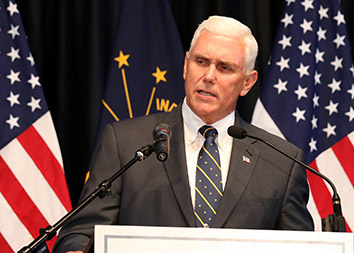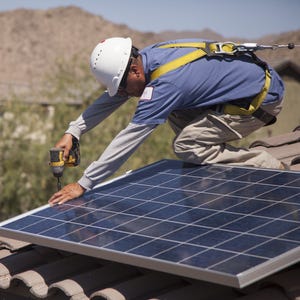Nevada PUC approves restoring retail net metering to Sierra Pacific customers
Dive Brief:
- The Public Utilities Commission of Nevada unanimously approved a draft order to restore retail rate net metering to customers in Sierra Pacific Power's service territory. Any cost shift borne by ratepayers is "reasonable," the commission said in the draft order.
- In the order, the PUCN would open up to 6 MW of installed capacity for rooftop solar systems in northern Nevada to fall under the original net metering rates on January 1, 2017. The decision, however, only serves about 1,500 customers.
- The hearing comes as the PUCN prepares for testimony on Sierra Pacific's Integrated Resource Plan (IRP), which sets long-term forecasts for future investments.
Dive Insight:
In a hard-fought victory for the solar industry, the PUCN voted to reinstate full retail rate net metering for solar customers in northern Nevada after terminating it last year.
By opening up the capacity to 6 MW, regulators said it will "nearly double the growth of [net metering] participants in Sierra Pacific Power's territory over the past three years."
Net metering is a popular billing mechanism that credits residential solar customers—usually at the retail rate—for any excess energy exported to the grid. But increasingly, the policy has come under fire. Utilities say those customers don't pay their fair share for grid upkeep. On the other hand, solar customers argue utilities and regulators fail to quantify all the benefits distributed solar provides to the grid, including avoided costs in transmission and environmental impacts.
Regulators said in this instance, any cost-shift to non-solar ratepayers is "reasonable under the facts of this case."
"Under this order, the average Nevada ratepayer will see a decrease of $0.01 per month on monthly utility bills," they wrote.
Chairman Joe Reynolds called last year's decision a promise better left unkept.
"Abraham Lincoln once said that “[b]ad promises are better broken than kept...The PUCN’s prior decisions on NEM [Net Energy Metering], in several respects, may be best viewed as a promise better left unkept. The PUCN is free to apply a new approach...We look forward to pursuing that new approach together with all Nevadans.”
In the last year, Nevada's become a byword for acrimony in solar proceedings.
Last year, regulators chose to end the state's retail net metering program, replacing it with lower rates and higher fees. They also applied the new rates not just to new solar customers, but existing ones as well, an unprecedented move that sparked the most controversy.
After the decision, two leading solar developers exited the state and national wave of backlash slammed the decision, leading the governor to form an energy task force and choose not to reappoint two commissioners.
After the decision, the incumbent utility NV Energy collaborated with solar interests, including SolarCity, to come up with a grandfathering proposal. SolarCity, in conjunction with the Natural Resource Defense Council, also produced a study showing rooftop solar provides a net benefit of 1.6¢/kWh.
The decision aligns with SolarCity's head policy chief (and former FERC Chairman) Jon Wellinghoff's goal for restoring net metering throughout the state.
"I commend the Public Utilities Commission of Nevada for bringing full retail net metering back to Northern Nevada, and affirming that whether solar customers are providing clean solar energy for their own homes, or supplying it to their neighbors, the benefits of that local generation outweigh the costs," Wellinghoff said in a statement.
With this win, it appears the solar sector is on course to reclaim some of the financial ground it lost through the decision last year. However, the reinstatement is confined to less than 2,000 customers. It remains to be seen whether or not this decision will spread to the rest of Nevada. Gov. Brian Sandoval (R) through his New Energy Task Force wants retail rate net metering fully restored.
Arizona, conversely, ended its retail net metering program earlier this week after the conclusion of its value-of-solar docket. Instead, compensation schemes will be decided in pending rate cases.
Follow Krysti Shallenberger on Twitter








